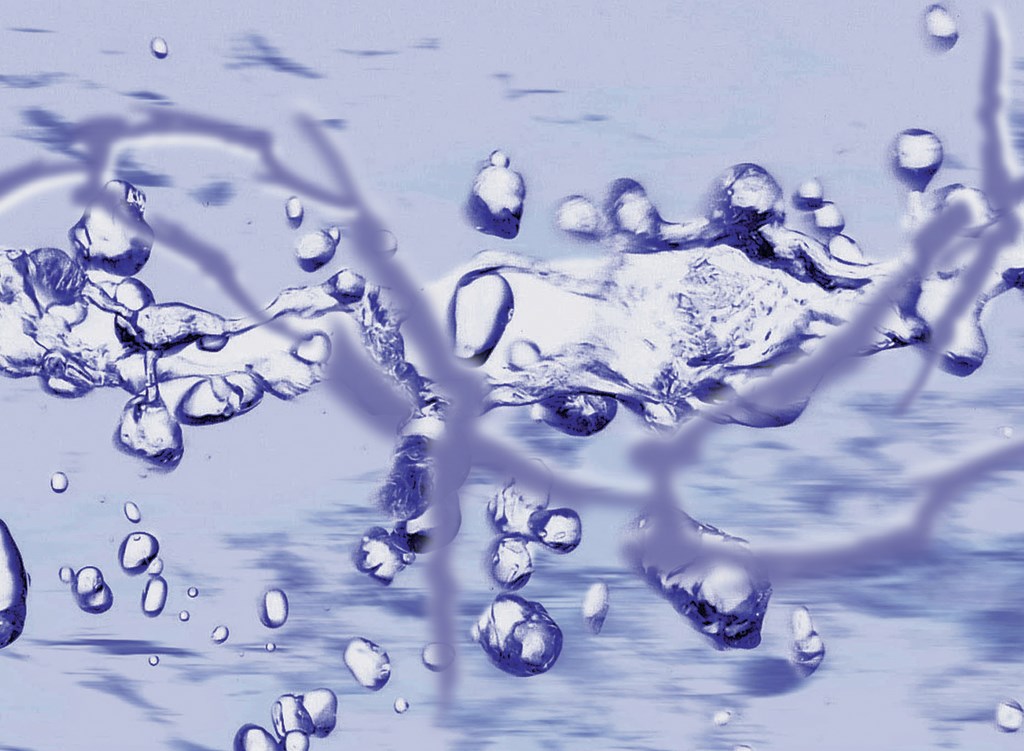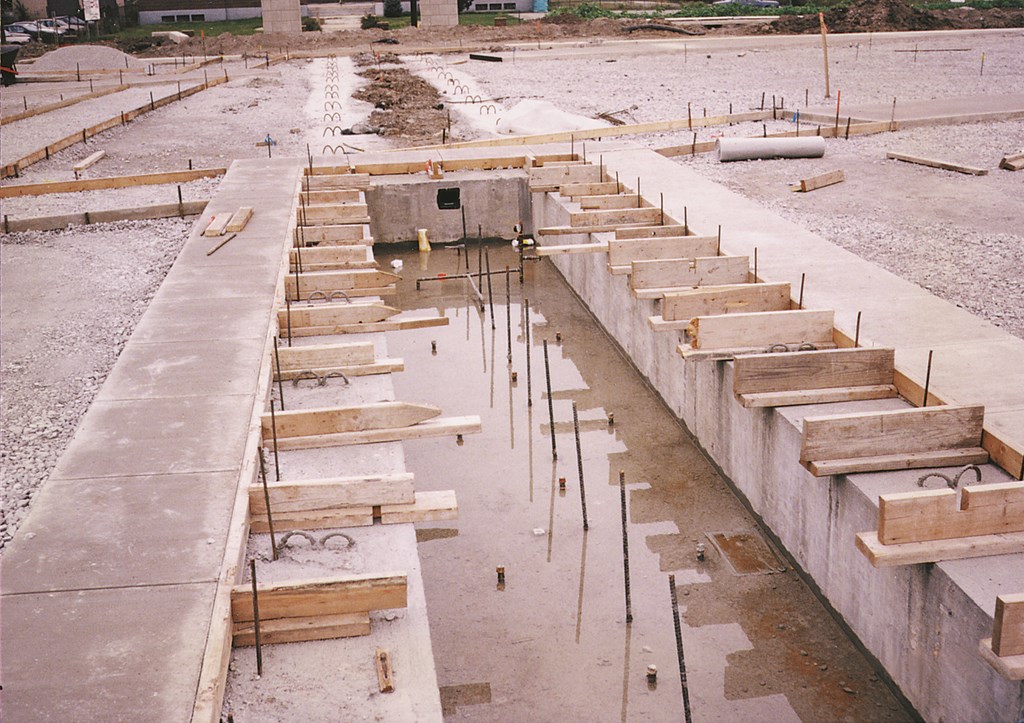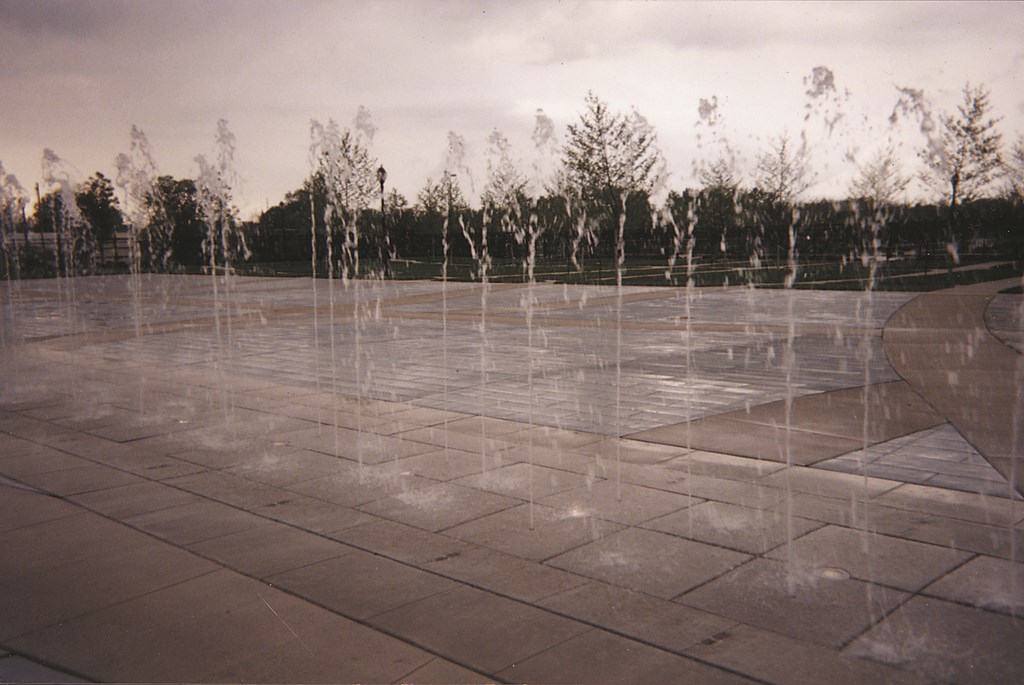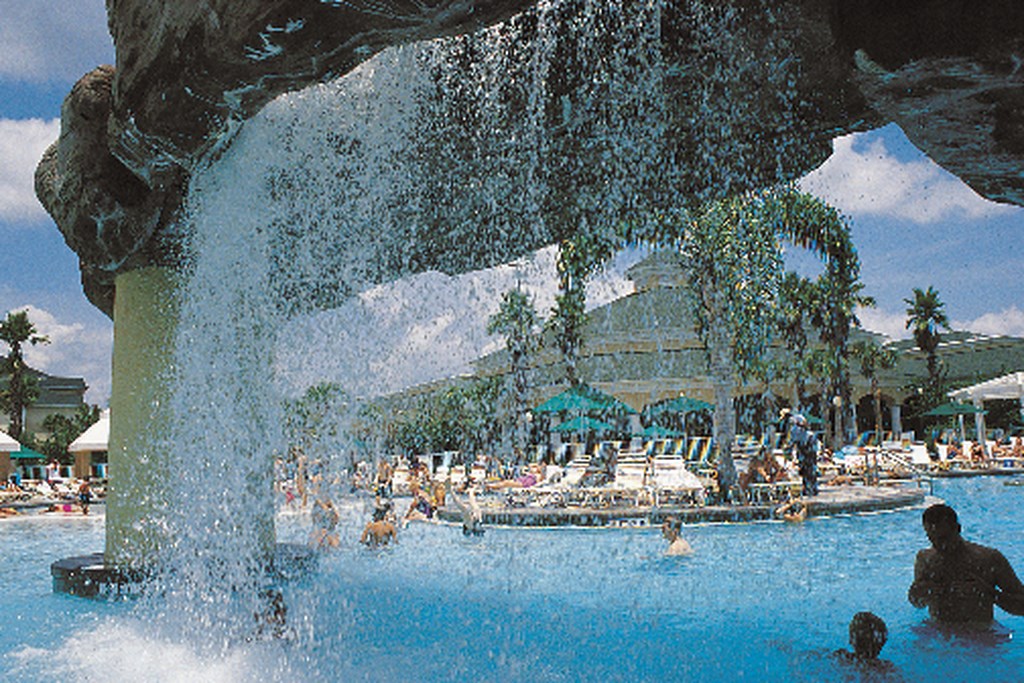Dancing Waters

In conceptual terms, interactive fountains are really nothing new. In fact, fountains have featured water effects and sequencing lights since the turn of the 20th Century.
What’s emerged lately is a perception that these “dancing” waters are great sources of fun – a means for children to get soaked and for adults to stay dry and enjoy the show. This resurgence of interest has led designers and manufacturers to apply the knowledge and mechanics of the past in creating effects that delight the eye, capture the imagination and bring fun to just about any setting.
Another factor in the resurgence is the fact that building an interactive fountain is really no different than building a commercial pool: It’s a matter of layout, design, excavation, construction and finish details – all pretty basic and within reach. The functional side of interactive fountains is pretty straightforward as well: They consist of an array of vertical spouts of water that can be arranged in an infinite range of patterns. In effect, they can be made to “dance” in any way the owner/operator chooses and can stand alone or be integrated into designs of swimming pools, waterfalls or waterparks.
What does it take to design and install one? Well, attention to detail is a must, as is precision in both design and construction. These fountains can get fairly complicated, so there’s also usually a need for tight project management. Beyond that, however, it’s the kind of work most quality-minded contractors can tackle. To illustrate that point, let’s take a look at two recent fountain projects and talk about how they came together.
DOWN BY THE RIVERS
The basic idea with interactive fountains is to get people wet, and there aren’t many limitations on the ways it can be done – a creative license truly appreciated by architects and planners who compete with designs that are becoming increasingly complex and innovative. Literally, anything that can be imagined can be created: There are no design standards – and no limits beyond the guidelines imposed by local health departments and other authorities governing public and semi-public installations.
Fortunately, the process of providing these interactive fountains is greatly simplified by vendors who supply turnkey systems – complete with pre-plumbed, pre-wired equipment vaults and programmable logic control (PLC) devices along with detailed plumbing plans. These “packages” (in this case, one designed and manufactured by our staff at Wesco Fountains of Venice, Fla.), enable contractors to focus on construction fundamentals knowing they will have technical support at every step of the way.
| IN CONSTRUCTION TERMS, building an interactive fountain isn’t much different from installing a standard pool. All it takes is a focus on precision and some high-caliber project management. |
Often the scope and design of these projects arise from a need to draw people to specific spaces. That was the motivator for the Headwaters Park Commission in Fort Wayne, Ind. After evaluating options for a new park, they decided that an interactive fountain was just the ticket in turning the park into a magnet for families – and using it to key a much larger revitalization plan for the downtown area.
Headwaters Park is a 30-acre downtown peninsula bordered by the confluence of the St. Mary’s and St. Joseph’s rivers, which then become the 150-mile long Maumee River. The low-lying site is subject to periodic flooding; with all the concrete and asphalt common to downtown areas, the floodwaters were not absorbed into the ground, creating bigger flood problems for the area.
To mitigate these costly disasters (floods in 1978, 1982 and 1991, for example, caused the downtown district alone a combined $10 million in damage), the park commission was formed to reshape the district and come up with a plan that would take this 30-acre slice of downtown and restore it as a flat, natural greenway.
As part of that master plan, existing buildings and parking lots were demolished and replaced with trees, flowerbeds and native grasses. The aim here was to use the park as a buffer that would soak up some of the floodwaters and lessen property damage for local businesses. The happy result was a green gathering place for local residents and tourists alike.
MAXIMIZING BENEFITS
To make the most of the space, the commission was determined to include an interactive fountain they started calling the “Fontenelle.” And as it turns out, they were right in assuming that an interactive watershape would draw children and families to the dancing waters.
What they couldn’t really anticipate was how great a magnet it would become: The Fontenelle has become the centerpiece of the park, and on any given spring or summer day, the area overflows with children playing in the jets of water that spring up from its grates and concrete pavers. Nozzles are set flush with the surface, and low water pressures are applied to ensure the safety of small-scale revelers. The design also incorporates underground troughs to collect the water and avoid the slip/fall hazards that come with any standing water.
| ONCE INSTALLED, even a simple line of interactive-fountain nozzles bring drama and fun to open spaces, as is the case in Fort Wayne’s Headwaters Park in Indiana. |
As installed, the big fountain is divided into six zones, each served by a central control pump station pre-constructed with all control valves (both manual and automatic) and an automatic bypass system. The automatically controlled valves govern the height of the spouts, while electronic valves activate the jets themselves and are controlled by a PLC system specifically designed for the Fontenelle.
Interactive jets, stainless-steel control valves and a pressure-regulating valve round out the primary components of a skid-mounted assembly. The hydraulics are engineered in such a way that the plumbing is never “dead headed” – that is, where water pressure remains in the pipes with no release.
Although the pump motor is constantly running, a pressure regulator at the far end of the system releases any built-up water and directs it to the collector tank for recirculation. The pressure regulator also eliminates any “water hammer” phenomenon that might damage the fountain equipment.
All in all, it’s a system designed and engineered for steady, long-term use – but is fully adjustable so that it can’t become predictable, boring or old hat.
GOOD COORDINATION
To build a project such as the “Fontenelle,” it’s imperative that all contractors and subcontractors be on the same page. In this case, the project started off in perfect stride: The overall plan was a collaborative effort by the planner/architect, installing contractor and fountain-equipment supplier, and it was agreed to approach the construction of the fountain as a simple, three-step process.
• Excavation and site preparation: The general contractor took care of everything here, including the equipment vault, the vessel and all necessary trenching.
• Plumbing and electrical: The contractor and equipment vendor worked together here, making certain all underground work was complete.
• Concrete work and fountain fixtures: Once the contractor’s crews poured and finished the concrete, the mechanical contractor moved in to install the nozzles and grates.
| THE FONTENELLE is interesting sculpture on its own (left), but when bathers are added (middle), the composition takes on drama, added dimension and a spirit that can only be described as “fun.” And in the evening, an altogether different effect is achieved with the addition of colored lights (right). |
This oversimplifies the process, of course, but the point is that the construction end of the work was all fairly ordinary. The key to smooth sailing in this case was the fact that the vendor packaged the fountain equipment as sub-assemblies for easy field installation. To make the system work, the plumbing contractor simply set the skid in place and made the necessary connections.
Once the pressure testing was done and the finishing touches had been applied, the Fontenelle came on line. Since its installation in 1997, it has become one of the most popular attractions in all of Fort Wayne – a gathering place for families and a source of entertainment and relaxation for all who come to participate – or observe the scene from a safe, dry distance.
In June 1999, Headwaters Park earned its mayor, Paul Helmke, a City Livability Award. This program honors mayors for leadership in developing and implementing community projects or programs that improve the lives of the community. More than 500,000 people already visit the park each summer; with added publicity and awards, park officials say that those numbers are sure to rise – much to the benefit of the city and especially its downtown district.
FROM SIMPLE TO COMPLEX
The value of this kind of performance isn’t lost on other commercial clients. In fact, hotel chains and resort-condominium complexes across the country recognize that making their facilities more family-friendly enhances image as well as revenues.
So let’s take a look at a second project, this one at the Vistana Resort in Orlando, Fla., where an interactive fountain eventually became the focal point for a recent phase of development: Known as Cas-cades Village, this enclave of 386 units (mostly time shares) features a recreational commons and a pool complex.
Along with the developer, the facility’s sales and management staff identified a need to develop the pool complex as a magnet for kids – and an engaging visual draw for their parents as a sort of one-two punch aimed at potential buyers.
| IT MAY NOT be a water effect found in nature, but the cascades flowing from this massive outcropping certainly are fun – and a real drawing card for the pool complex at Orlando’s Vistana Resort. |
The result is a massive installation that serves as a recreational centerpiece for the resort. The main pool, with an 8,900-square-foot surface area, has a free-form shape that establishes a number of special spaces for interactive experiences. The decks surrounding the pools, made with interlocking pavers, offer 16,000 square feet of space for sunbathers. As a backdrop for the pool and recreation center, the developer wanted a large, man-made rock formation.
Working with that concept, the landscape architect wanted to create the illusion that the pool had been dug around an existing rock formation. In one area, the formed rock projects out over the pool, where a column supports it. The idea is to create an impression that the rock had to be supported to avoid having it fall into the water.
This mild sense of “danger” is reinforced in the waterfeature integrated with the rockwork: It emerges from a large fissure in the rock, suggesting the rock has been sheared by forces of nature to enable water to fall as a cascade across the cantilevered stone. The source of the water is concealed in an 18-foot-long trough inside the rock.
That strong visual element is balanced in the pool’s shallow end by a unique interactive waterfeature. In concept, the area is like a zero-depth entry – but in reverse.
Here, visitors step into shallow water (12 inches deep) and then slowly move up at a 10:1 gradient to one of three islands toward the center of the pool. Each island rises approximately four inches above the water line and is covered with a cushion of Saf-Deck selected as a blend of three light-beige colors. Into the mix was added a 5% measure of red, blue, and yellow aggregates, giving the illusion that the islands are dotted with precious stones: rubies, sapphires and topaz.
COMPLETING THE PACKAGE
The interactive touch comes with a series of flush-mounted spray nozzles set in each island, plumbed in such a way by Orlando-based contractor Weller Pools that an infinite variety of spray patterns could be created.
Again, this was a turnkey system. We at Wesco set things up with electric valves and a programmable computer to create more than 50 basic combinations of fountain action on a rotating schedule. The timing sequence allows children and adults to anticipate patterns as they jump through, sit on or lay in the spray from the fountains’ nozzles.
At the opposite end of the pool, a large free-form perimeter allows for a quieter, more-adult pool experience; even at a distance, however, they still visually experience the water dynamics taking place at the other end of the pool.
This particular project illustrates the variety and creativity that can go into interactive waterfeatures as well as the effectiveness of collaborations among owners, contractors and design/manfacturing firms.
| BATHERS APPROACH these small islands in the shallow end of the pool at the Vistana Resort by stepping into 12 inches of water and then climbing upslope to one of three sections of dry land (left) – where the unsuspecting get a surprise when the fountain system starts up (right). |
Weller Pool Constructors, a local operation with a national reputation for large-scale projects such as this one, consulted with us regularly to ensure a smooth installation process. This project was no match in scale to the work Weller did on the Olympic pool complex in Atlanta, but the work at Vistana Resort nonetheless called for careful attention to detail and rigorous adherence to the blueprints and schematics drawn up for the pool area.
We assembled the pump skid to meet the specific requirements of the project: All the contractor had to do was put it in place and install the electrical and water connections. Between some quality work by the contractor and good preparation on the vendor side, installation was easy and the waterfeature bound for success.
Bringing a level of interactivity and excitement that was formerly reserved for waterparks to resorts and municipal parks is a relatively new concept, but it’s one that never should be set aside because of any concerns about design or installation. Given current technology, these effects are within reasonable reach of any quality-oriented watershape contractor.
In fact, imagination is the only boundary on interactive fountains. When you consider possibilities beyond those illustrated by the two projects described here – things like motion detectors as system triggers, lighting effects to enhance visual features and night-time enjoyment, and the creative use of landscaping to add texture and additional visual features to the setting – and the sky is literally the limit.
What’s more, this sort of interactivity is just plain fun.
Jeff Horvath has been part of the watershaping industry since 1979, when he purchased Venice Sprinkler and Irrigation, a Venice, Fla.-based manufacturer of irrigation systems. The firm soon moved into fountain design and engineering and was renamed Wesco Fountains. The company now designs and manufactures systems for high-end architectural fountains for shopping malls, resort properties, condominium complexes and other institutional clients as well as systems suited for use in smaller commercial and residential applications.


















